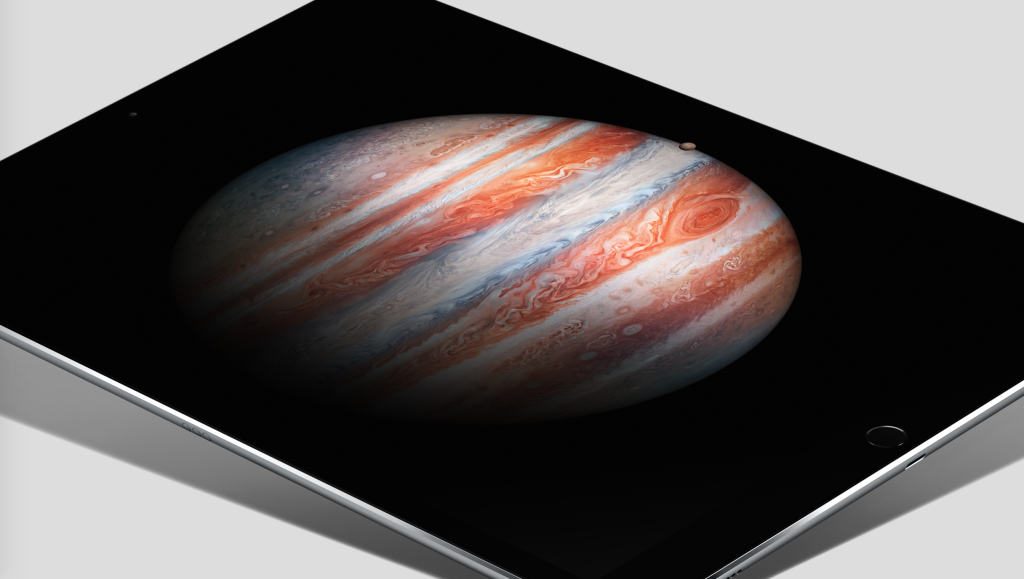The iPad Pro is here, and in the hands of customers right now: it’s the largest tablet yet from Apple, offering a 12.9-inch Retina display and support for a range of impressive, must-have accessories (as well as a heftier price tag, of course). For most Apple users, however, it’s all about the iPhone, which got us thinking. What lessons can Apple’s smartphone learn from the iPad Pro? Let’s take a look.
Is bigger really better?
Lots of customers bemoaned the launch of Apple’s 5.5-inch iPhone 6 Plus handset, claiming the smartphone was simply too big to use, but the iPad Pro has made us realize that when it comes to iOS devices, there’s no denying more screen real estate can enhance the quality of plenty of consumable media from photos to videos. Furthermore, it also provides users with the additional space to get work done on Apple’s mobile platform.
There’s a lot of talk about Apple bringing a four-inch “iPhone 6c” to the market, and this might please a lot of users, but it all depends on to what extent a user wishes to trade-off portability with huge gains in productivity. In 2015, the iPhone truly has the power of a mini-computer that can fit in your pocket (albeit only just). A bigger screen means this device is more usable, if a little trickier to carry around.
Four-speaker audio is more impressive than you might think
The iPad Pro includes four speakers at each corner of the tablet, and these dynamically alter sound output based on the direction the iPad is being held in. After playing a few songs and watching a couple of videos on the iPad Pro, the device’s four-speaker audio has hugely impressed us. This is definitely something Apple should consider bringing to its iPhone line, even if it’s reserved for the higher-end “Plus” models. Because on Apple’s smartphone, there’s a lot of scope for speaker improvement, and four-speaker audio could indeed be the way forward.
The Pencil might be Apple’s best accessory yet
Apple’s two accessories for the iPad Pro, the Pencil and Smart Keyboard, are simply outstanding. And while the Apple-developed keyboard case is a feat in design and manufacturing, it’s the Pencil that’s really bowled us over. The precision of the device, and how easily the stylus replicates the feel and use of a real-world pen or pencil, is flabbergasting. Yet we’re still unsure of iPhone support is the way forward for the Apple Pencil.
The Pencil is just brilliant: it replicates handwriting perfectly, and is a must-have accessory for iPad Pro owners
After using the Pencil for a few weeks now, we’re unsure the stylus could ever work with Apple’s iPhone. Even the 7.9-inch iPad mini would be a squeeze for comfortable Pencil use. Despite this, the launch of the Pencil and Smart Keyboard doesn’t mean nothing for Apple’s iPhone. Instead, we think this highlights more than ever how capable Apple is at producing accessories which work in perfect tandem with its own smartphones and tablets. This has continued recently with the launch of Apple’s first official battery case for the iPhone, and we really hope it continues into 2016 with the launch of more Cupertino-developed iOS accessories. Because after using the iPad Pro, it’s clear that the right kind of accessory can truly transform the usability an iOS device. And there’s no reason why this logic couldn’t extend to the iPhone, too.
The Pencil and software like Procreate make it possible for non-artists (like me) to practise drawing, sketching, and painting
There’s a lot to learn from the iPhone, too
It’s clear that the iPad Pro isn’t the finished product: two features from Apple’s iPhone 6s are missing from the 12.9-inch tablet, and as such there’s room for the device to further improve. Navigating iOS on the iPad Pro without support for 3D Touch gestures and shortcuts is frustrating for users of the larger tablet, and this brilliant feature from the iPhone 6s would hugely benefit the experience of using the iPad Pro. There’s something else we’re missing, too: a second-generation Touch ID scanner. You see, on the iPad Pro, users will find that the first-generation fingerprint-scanner is embedded beneath the Home button, meaning you won’t be able to access the Lightning-fast fingerprint recognition iPhone 6s and 6s Plus owners are used to.
Touch ID isn’t as fast as we’d like on the iPad Pro, and it’s still prone to the occasional mis-reading
For an even better iPad Pro experience Apple needs to ensure these iPhone features reach its “pro” tablet with its second-generation release.
You can get work done on iOS
Perhaps the most fundamental aspect we can take away from using the iPad Pro is this: now, more than ever before, it’s possible for regular people to get serious work done on iOS devices. This has been helped along on the iPad platform by iOS 9 multitasking and smart accessories, but it also holds big implications for the iPhone. As a device which syncs perfectly with the iPad, Apple needs to further position the iPhone as a handheld computer which can easily be incorporated within our professional lifestyles for more mobile computing purposes.
Apps like Workflow make it possible to execute complex actions on iOS, allowing iPad Pro (and iPhone) owners to get serious work done
Features like Handoff and the launch of apps like Workflow have helped in this respect, but it’s definitely a direction Apple can develop in 2016 and beyond. Gone are the days of desktops, cables, and wires. It might be more than eight years since Steve Jobs made the famous claim, but now, more than ever, we truly are living in a post-PC era.
